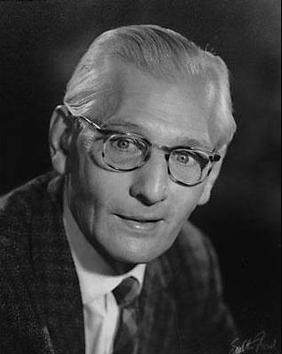
Sir Robert Eric Mortimer Wheeler CH CIE MC TD was a British archaeologist and officer in the British Army. Over the course of his career, he served as Director of both the National Museum of Wales and London Museum, Director-General of the Archaeological Survey of India, and the founder and Honorary Director of the Institute of Archaeology in London, in addition to writing twenty-four books on archaeological subjects.

Charles Francis Christopher Hawkes, FBA, FSA was an English archaeologist specialising in European prehistory. He was Professor of European Archaeology at the University of Oxford from 1946 to 1972.
The year 1999 in archaeology involved some significant events.
The year 1976 in archaeology involved some significant events.
The year 1959 in archaeology involved some significant events.
The year 1961 in archaeology involved some significant events.
Below are notable events in archaeology that occurred in 1941.
The year 1956 in archaeology involved some significant events.
The year 1979 in archaeology involved some significant events.
Below are notable events in archaeology that occurred in 1933.

Cueva de las Manos is a cave and complex of rock art sites in the province of Santa Cruz, Argentina, 163 km (101 mi) south of the town of Perito Moreno. It is named for the hundreds of paintings of hands stenciled, in multiple collages, on the rock walls. The art was created in several waves between 7,300 BC and 700 AD, during the Archaic period of pre-Columbian South America. The age of the paintings was calculated from the remains of bone pipes used for spraying the paint on the wall of the cave to create the artwork, radiocarbon dating of the artwork, and stratigraphic dating.

The Pinturas River Canyon is a canyon located 160 km from the town of Perito Moreno in Santa Cruz, Argentina. It is home to the Pinturas River, which carved the canyon through eroding the Chon Aike Formation. Native populations inhabited the region, painting many works of rock art, some of which can still be seen today. The most famous of these rock art sites is the Cueva de las Manos, a cave site with ancient art whose creation dates back up to 13,000 years ago. This rock art, and Cueva de las Manos in particular, brings lots of tourism to the canyon.

Finglesham is a village in the civil parish of Northbourne, and near Deal in Kent, England, which was the location of the Finglesham Anglo-Saxon cemetery, site of a seventh-century Anglo-Saxon archaeology find known as "Finglesham man," as described in 1965 by Sonia Chadwick Hawkes and Hilda Ellis Davidson. The village takes its name from the Old English Pengles-ham, meaning 'prince's manor', with the Anglo-Saxon cemetery containing a number of aristocratic burials. The population of the village is included in the civil parish of Northbourne.
Perito Moreno is a town in the northwest of Santa Cruz Province, Argentina, 25 km east of Lake Buenos Aires. It should not be confused with the Perito Moreno National Park over 300 km south by road, or the Perito Moreno Glacier near El Calafate. The town is the capital of the Lago Buenos Aires Department. It lies on the RN43, a paved road which links Caleta Olivia on the Atlantic coast to Los Antiguos and the Chilean frontier 60 km west, and Ruta 40, running north and south.
Finglesham Anglo-Saxon cemetery is a place of burial that was used from the sixth to the eighth centuries CE. It is located adjacent to the village of Finglesham, near Sandwich in Kent, South East England. Belonging to the Anglo-Saxon period, it was part of the much wider tradition of burial in Early Anglo-Saxon England.

Sonia Chadwick Hawkes was a British archaeologist specialising in early Anglo-Saxon archaeology. She led excavations on Anglo-Saxon cemeteries at Finglesham in Kent and Worthy Park in Hampshire. She was described by fellow medieval archaeologist Paul Ashbee as a "discerning systematiser of the great array of Anglo-Saxon grave furnishings".

Carlos Joaquín Gradin, also known as Carlos Gradín, was an Argentine surveyor and archaeologist. He carried out numerous studies in the Patagonian region, and is known for his extensive studies of Cueva de las Manos. He was a member of the National Scientific and Technical Research Council (CONICET).
Los Toldos is an archaeological site in Santa Cruz, Argentina, which has evidenced human activity dating back almost 13,000 years ago. It is the namesake of the Toldense culture group.
Updown early medieval cemetery in Eastry, Kent, United Kingdom, was used as a burial place in the 7th century. Eastry was an important administrative centre in the Kingdom of Kent. Updown was one of four cemeteries in and around Eastry. The cemetery measures roughly 150 by 80 m and may have encompassed around 300 graves.







